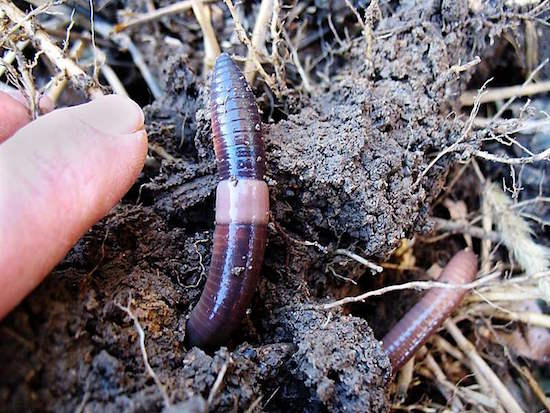Got Worms?

Unfortunately many of us now realize that there is more than one kind of earthworm. And not all of them are good. Asian jumping worms (Amynthas agrestis ) also known as crazy worms are something that gardeners should be on the lookout for. This worm’s name comes from its rather crazy movements; it wriggles, jumps and dances and moves more like a snake than the traditional earthworm.
The problem with these worms is that they can degrade eco systems by stripping the soil of organic matter. They do not tunnel deeply like earthworms but rather feed on the first few inches of leaf litter. And they have voracious appetites. They move very quickly and where fungi may take three years to break down a single leaf these creatures can do it in three weeks. Castings that are left behind, which resemble coffee grounds, have been made so quickly that they are more like a fast-release fertilizer, giving plants a spike in nutrients rather than the slow and steady release they require.

An Asian jumping worm has a dark brown to gray body, rather than the reddish-brown of an earthworm. The clitellum (band that circles the worm) on the Asian jumping worm is smooth and milky-white to gray and wraps around the entire body, unlike the European earthworm.
Asian jumping worms are parthenogenic which means they can reproduce on their own. At this point there is no “cure” but there are steps to take to limit the scope of the species.
Make sure that compost and soil are sterile so as to avoid transporting the cocoons. Remove soil from gardening tools, shoes, etc. for the same reason. Check any plants for Asian jumping worm. More information on this latest invasive threat can be found in this article from Iowa State University Extension and Outreach.
If I find Asian jumping worms in my garden I am going to collect them in a coffee can.
And then go fishing.

Follow Us!